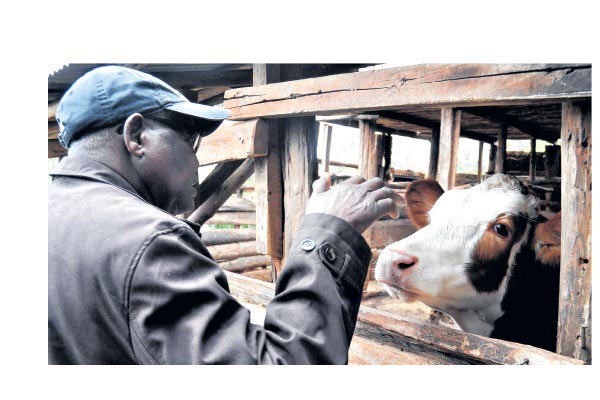Leonard Munga is an excited dairy farmer. He is happy because one of his cows is pregnant and will give birth in a few weeks’ time.
“I am expecting to get over 20 litres of milk each day from the cow,” says Munga, who is based in Kiambu County.
The cow is a crossbreed of Fleckvieh, a German breed that was introduced into the country few years ago.
“I went for the crossbreed because it was expensive to buy the 100 per cent Fleckvieh breed. My cows are a crossbreed of Friesian and Fleckvieh.”
According to him, the crossbreed is strong, resistant to diseases and eats less. The cow also endures years of milking, unlike the other breeds. Francis Kukutia, who is based in Kajiado County, is another farmer keeping crossbreeds of Fleckvieh, with Zebu, Boran, Friesian and Ayrshire.
Each of these cows give varying amounts of milk. His crossbreed of Fleckvieh and Boran, for instance, yields eight to 10 litres of milk a day. “I keep the crossbreed because I wanted to be a breeder and supplier of beef in local butcheries,” said Kukutia.
“Boran is good for beef but the reason why I crossbreed is so that I can also get good quantity of milk,” he says. “I want to be a breeder and supplier of beef in local butcheries,” said Kukutia. Kukutia sells the crossbreed bull-calf at Sh150,000.
Fleckvieh was imported into the country from South Africa about three years ago.
It is a dual-purpose breed, meaning that it’s good for beef and milk.
Gerard Besseling, the managing director of Fleckvieh Genetics East Africa Limited, the firm which introduced the breed in Kenya, says the cow produces up to 10,000 litres of milk per lactation period.
He says most farmers prefer to crossbred Fleckvieh and other breeds to cut costs.
“Farmers crossbreed local breeds with Fleckvieh for extra yielding. Boran bulls, Jersey and Ayrshire are some of the cattle that farmers have crossbred with the German cow.”
The firm sells Fleckvieh semen at between Sh1,500 and Sh4,000.
According to him, the offspring carries 75 per cent of Fleckvieh genetics after artificial fertilisation. Fleckvieh experts consider this to be a high degree of gene transfer, 25 per cent more than normal breeds.
The economic benefits of Fleckvieh can be compared to the Sahiwal breed. Sahiwal is a Zebu breed that is mainly kept for milk and beef. “Farmers in South Rift are familiar with this breed. The animal is tolerant to heat and resistant to most cattle diseases,” he adds.
The Zebu cattle originally came from Punjab, near the India-Pakistani border. It was brought to Kenya in the late 1930s. Since then, it has become popular with local farmers, especially ranchers.
It is praised for its adequate milk production. In Kenya, the animal has been crossbred with other dairy cattle.
Although much research has been done on breeds like Sahiwal, extension officers and livestock breeders from Kenya Agricultural Research Institute (Kari) say they have no data to back the productivity of Fleckvieh breed. “Fleckvieh is a relatively new breed introduced in the country three years ago.
We are yet to conduct research on it,” says Dr Ndeiye Ilatsia, a livestock breeder at Kari.
The climatic conditions of some of the places where it’s being reared, like South Africa, may not match some locations in the country.
“The first point of concern is whether or not Fleckvieh might turn out to be antagonistic considering Kenya is hot, but a farmer can overcome such challenges with its crossbreeds.”
Limited land is another challenge for small farmers keen on capitalising on pure Fleckvieh for milk and beef production.
“Rearing a particular breed is an individual farmer’s choice,” said Dr Ilatsia “It’s however hoped that the uptake of Fleckvieh, Sahiwal, Normande and Girolando crossbreeds will go up as farmers absorb them.”

